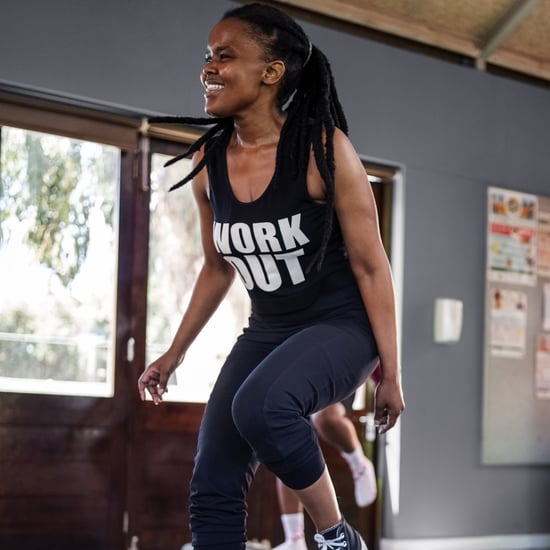Is Muscle Soreness For 3 Days Normal?
Here's When You Should Be Concerned About Your Muscle Soreness, According to 2 Experts

It's normal to be sore after a hard workout. And — congrats! — that could even mean you're gaining muscle. Here's an overview of what you need to know: for starters, you're going through delayed onset muscle soreness, or DOMS. Though research on DOMS is ongoing, it's widely believed that it's a result of microtears in the muscles that lead to gradual inflammation. Eccentric movements where we're lowering our bodies under control (think: going down for a squat or deadlift or lowering your arms in a bicep curl) are believed to be the culprit. If you're adding extra reps to your workout or doing something you've never done before, you're more likely to experience soreness. But, how long is DOMS supposed to last?
Is Muscle Soreness For 3 Days Normal?
The short answer is yes, DOMS for three days is normal. (Relieved yet?) DOMS typically lasts from one to three days, but this will vary based on how intense it is, Paul Searles, CSCS, from the New York Sports Science Lab, told POPSUGAR. The more total reps you do in a workout, the more microtrauma in the muscles and the more sore you'll be. "It is not uncommon to feel the effects for up to a week following an intense, high-volume workout," he explained. "Additionally, if your body isn't adapted to the type of workout or exercises you are performing, the soreness after is usually more intense."
Physical therapist at Perfect Stride Tyler Denn-Thiele, DPT, CSCS, similarly told POPSUGAR that the duration of DOMS depends on how hard your workout was, though he said that, typically, muscle soreness associated with DOMS peaks somewhere between 48 and 72 hours post-workout (find research on this here). "If you have worked really hard, it is definitely possible for DOMS to last longer than three days, but it should be getting better at this point," he said. "My concern would be if you continue to get worsening DOMS after 72 hours." Symptoms usually decrease, then disappear at the five- to seven-day mark.
Due to something called the "repeated bout effect," the more you do a workout that made you sore, the easier it will become. However, if you continue to exercise on sore muscles, this might prolong your recovery time, Tyler noted. Good alternatives would be some active recovery like walking or exercising other muscle groups instead (take a Spin class to rest your aching arms, for example).
Contact your doctor if your DOMS worsens after that three-day mark or you experience pain while exercising. It's important, Paul said, to identity the difference between soreness and acute pain. "For example, there is a difference between a sore hamstring and a torn hamstring." Be wary of any profound weakness as well as bladder or bowel issues like rhabdomyolysis, which is a rapid breakdown of skeletal muscle tissue that could lead to kidney failure if left untreated. This is typically indicated by cola-coloured urine and fatigue.
You can try to prevent DOMS by easing into workouts gradually. Once it sets in, DOMS can't exactly be cured, but you can take measures to ease the discomfort. Check out these home remedies and our articles on how to treat sore back muscles, sore legs, and sore chest muscles specifically. Don't be afraid of DOMS, but be mindful of it!








